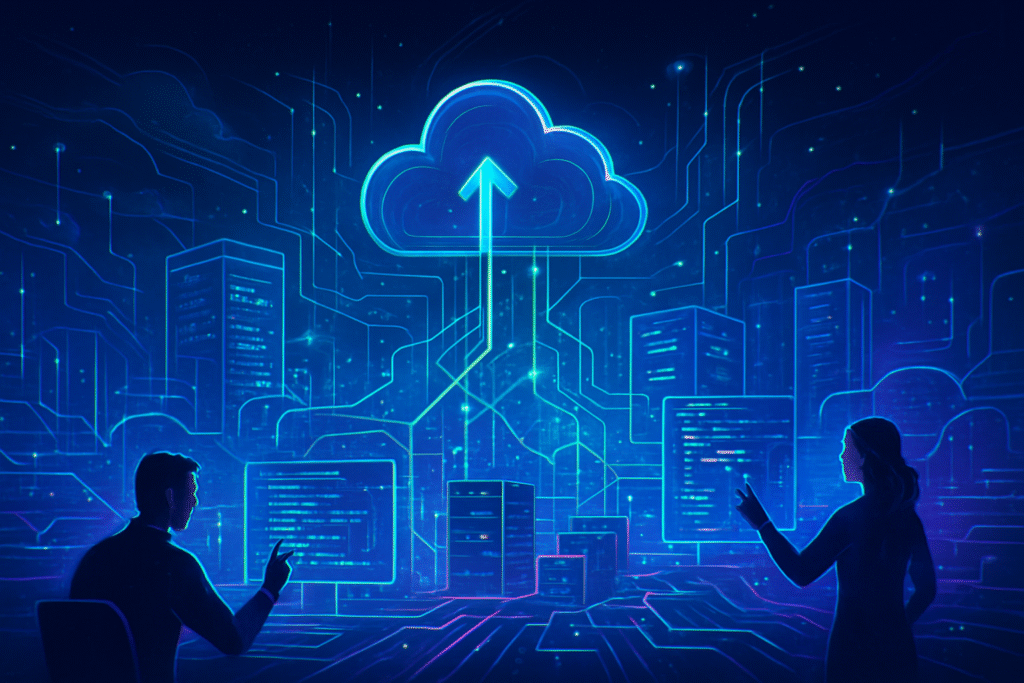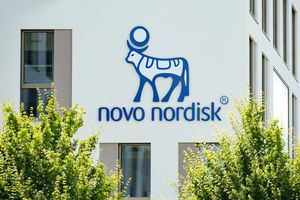
The technological landscape is in a perpetual state of flux, driven by an unyielding quest for efficiency, agility, and innovation. At the heart of this dynamic evolution lies the continuous transformation of software platforms and development methodologies. This relentless advancement is not merely incremental; it represents a fundamental reshaping of how software is conceived, built, and deployed, directly fueling unprecedented tech growth and opening new frontiers for businesses and consumers alike.
From the rise of cloud-native architectures to the pervasive integration of artificial intelligence in development workflows, these shifts are accelerating innovation cycles, democratizing software creation, and enabling a new generation of intelligent, scalable applications. The immediate significance of these trends is profound, translating into faster time-to-market, enhanced operational resilience, and the capacity to adapt swiftly to ever-changing market demands, thereby solidifying technology's role as the primary engine of global economic expansion.
Unpacking the Technical Revolution: Cloud-Native, AI-Driven Development, and Beyond
The current wave of platform innovation is characterized by a concerted move towards distributed systems, intelligent automation, and heightened accessibility. Cloud-native development stands as a cornerstone, leveraging the inherent scalability, reliability, and flexibility of cloud platforms. This paradigm shift embraces microservices, breaking down monolithic applications into smaller, independently deployable components that communicate via APIs. This modularity, coupled with containerization technologies like Docker and orchestration platforms such as Kubernetes, ensures consistent environments from development to production and facilitates efficient, repeatable deployments. Furthermore, serverless computing abstracts away infrastructure management entirely, allowing developers to focus purely on business logic, significantly reducing operational overhead.
The integration of Artificial Intelligence (AI) and Machine Learning (ML) into platforms and development tools is another transformative force. AI-driven development assists with code generation, bug detection, and optimization, boosting developer productivity and code quality. Generative AI, in particular, is emerging as a powerful tool for automating routine coding tasks and even creating novel software components. This represents a significant departure from traditional, manual coding processes, where developers spent considerable time on boilerplate code or debugging. Initial reactions from the AI research community and industry experts highlight the potential for these AI tools to accelerate development timelines dramatically, while also raising discussions around the future role of human developers in an increasingly automated landscape.
Complementing these advancements, Low-Code/No-Code (LCNC) development platforms are democratizing software creation. These platforms enable users with limited or no traditional coding experience to build applications visually using drag-and-drop interfaces and pre-built components. This approach drastically reduces development time and fosters greater collaboration between business stakeholders and IT teams, effectively addressing the persistent shortage of skilled developers. While not replacing traditional coding, LCNC platforms empower "citizen developers" to rapidly prototype and deploy solutions for specific business needs, freeing up expert developers for more complex, strategic projects. The technical distinction lies in abstracting away intricate coding details, offering a higher level of abstraction than even modern frameworks, and making application development accessible to a much broader audience.
Corporate Chessboard: Beneficiaries and Disruptors in the Evolving Tech Landscape
The continuous evolution of software platforms and development methodologies is redrawing the competitive landscape, creating clear beneficiaries and potential disruptors among AI companies, tech giants, and startups. Cloud service providers such as Amazon Web Services (AWS) (NASDAQ: AMZN), Microsoft Azure (NASDAQ: MSFT), and Google Cloud (NASDAQ: GOOGL) are at the forefront, as their robust infrastructure forms the backbone of cloud-native development. These giants benefit immensely from increased adoption of microservices, containers, and serverless architectures, driving demand for their compute, storage, and specialized services like managed Kubernetes offerings (EKS, AKS, GKE) and serverless functions (Lambda, Azure Functions, Cloud Functions). Their continuous innovation in platform features and AI/ML services further solidifies their market dominance.
Specialized AI and DevOps companies also stand to gain significantly. Companies offering MLOps platforms, CI/CD tools, and infrastructure-as-code solutions are experiencing surging demand. For example, firms like HashiCorp (NASDAQ: HCP), with its Terraform and Vault products, or GitLab (NASDAQ: GTLB), with its comprehensive DevOps platform, are crucial enablers of modern development practices. Startups focusing on niche areas like AI-driven code generation, automated testing, or platform engineering tools are finding fertile ground for innovation and rapid growth. These agile players can quickly develop solutions that cater to specific pain points arising from the complexity of modern distributed systems, often becoming attractive acquisition targets for larger tech companies seeking to bolster their platform capabilities.
The competitive implications are significant for major AI labs and tech companies. Those that rapidly adopt and integrate these new methodologies and platforms into their product development cycles will gain a strategic advantage in terms of speed, scalability, and innovation. Conversely, companies clinging to legacy monolithic architectures and rigid development processes risk falling behind, facing slower development cycles, higher operational costs, and an inability to compete effectively in a fast-paced market. This evolution is disrupting existing products and services by enabling more agile competitors to deliver superior experiences at a lower cost, pushing incumbents to either adapt or face obsolescence. Market positioning is increasingly defined by a company's ability to leverage cloud-native principles, automate their development pipelines, and embed AI throughout their software lifecycle.
Broader Implications: AI's Footprint and the Democratization of Innovation
The continuous evolution of software platforms and development methodologies fits squarely into the broader AI landscape and global tech trends, underscoring a fundamental shift towards more intelligent, automated, and accessible technology. This trend is not merely about faster coding; it's about embedding intelligence at every layer of the software stack, from infrastructure management to application logic. The rise of MLOps, for instance, reflects the growing maturity of AI development, recognizing that building models is only part of the challenge; deploying, monitoring, and maintaining them in production at scale requires specialized platforms and processes. This integration of AI into operational workflows signifies a move beyond theoretical AI research to practical, industrial-grade AI solutions.
The impacts are wide-ranging. Enhanced automation, facilitated by AI and advanced DevOps practices, leads to increased productivity and fewer human errors, freeing up human capital for more creative and strategic tasks. The democratization of development through low-code/no-code platforms significantly lowers the barrier to entry for innovators, potentially leading to an explosion of niche applications and solutions that address previously unmet needs. This parallels earlier internet milestones, such as the advent of user-friendly website builders, which empowered millions to create online presences without deep technical knowledge. However, potential concerns include vendor lock-in with specific cloud providers or LCNC platforms, the security implications of automatically generated code, and the challenge of managing increasingly complex distributed systems.
Comparisons to previous AI milestones reveal a consistent trajectory towards greater abstraction and automation. Just as early AI systems required highly specialized hardware and intricate programming, modern AI is now being integrated into user-friendly platforms and tools, making it accessible to a broader developer base. This echoes the transition from assembly language to high-level programming languages, or the shift from bare-metal servers to virtual machines and then to containers. Each step has made technology more manageable and powerful, accelerating the pace of innovation. The current emphasis on platform engineering, which focuses on building internal developer platforms, further reinforces this trend by providing self-service capabilities and streamlining developer workflows, ensuring that the benefits of these advancements are consistently delivered across large organizations.
The Horizon: Anticipating Future Developments and Addressing Challenges
Looking ahead, the trajectory of software platforms and development methodologies points towards even greater automation, intelligence, and hyper-personalization. In the near term, we can expect continued refinement and expansion of AI-driven development tools, with more sophisticated code generation, intelligent debugging, and automated testing capabilities. Generative AI models will likely evolve to handle more complex software architectures and even entire application components, reducing the manual effort required in the early stages of development. The convergence of AI with edge computing will also accelerate, enabling more intelligent applications to run closer to data sources, critical for IoT and real-time processing scenarios.
Long-term developments include the widespread adoption of quantum-safe cryptography, as the threat of quantum computing breaking current encryption standards becomes more tangible. We may also see the emergence of quantum-inspired optimization algorithms integrated into mainstream development tools, addressing problems currently intractable for classical computers. Potential applications and use cases on the horizon include highly adaptive, self-healing software systems that can detect and resolve issues autonomously, and hyper-personalized user experiences driven by advanced AI that learns and adapts to individual preferences in real-time. The concept of "AI as a Service" will likely expand beyond models to entire intelligent platform components, making sophisticated AI capabilities accessible to all.
However, significant challenges need to be addressed. Ensuring the ethical and responsible development of AI-driven tools, particularly those involved in code generation, will be paramount to prevent bias and maintain security. The increasing complexity of distributed cloud-native architectures will necessitate advanced observability and management tools to prevent system failures and ensure performance. Furthermore, the skills gap in platform engineering and MLOps will need to be bridged through continuous education and training programs to equip the workforce with the necessary expertise. Experts predict that the next wave of innovation will focus heavily on "cognitive automation," where AI not only automates tasks but also understands context and makes autonomous decisions, further transforming the role of human developers into architects and overseers of intelligent systems.
A New Era of Software Creation: Agility, Intelligence, and Accessibility
In summary, the continuous evolution of software platforms and development methodologies marks a pivotal moment in AI history, characterized by an unprecedented drive towards agility, automation, intelligence, and accessibility. Key takeaways include the dominance of cloud-native architectures, the transformative power of AI-driven development and MLOps, and the democratizing influence of low-code/no-code platforms. These advancements are collectively enabling faster innovation, enhanced scalability, and the creation of entirely new digital capabilities and business models, fundamentally reshaping the tech industry.
This development's significance lies in its capacity to accelerate the pace of technological progress across all sectors, making sophisticated software solutions more attainable and efficient to build. It represents a maturation of the digital age, where the tools and processes for creating technology are becoming as advanced as the technology itself. The long-term impact will be a more agile, responsive, and intelligent global technological infrastructure, capable of adapting to future challenges and opportunities with unprecedented speed.
In the coming weeks and months, it will be crucial to watch for further advancements in generative AI for code, the expansion of platform engineering practices, and the continued integration of AI into every facet of the software development lifecycle. The landscape will undoubtedly continue to shift, but the underlying trend towards intelligent automation and accessible innovation remains a constant, driving tech growth into an exciting and transformative future.
This content is intended for informational purposes only and represents analysis of current AI developments.
TokenRing AI delivers enterprise-grade solutions for multi-agent AI workflow orchestration, AI-powered development tools, and seamless remote collaboration platforms.
For more information, visit https://www.tokenring.ai/.






